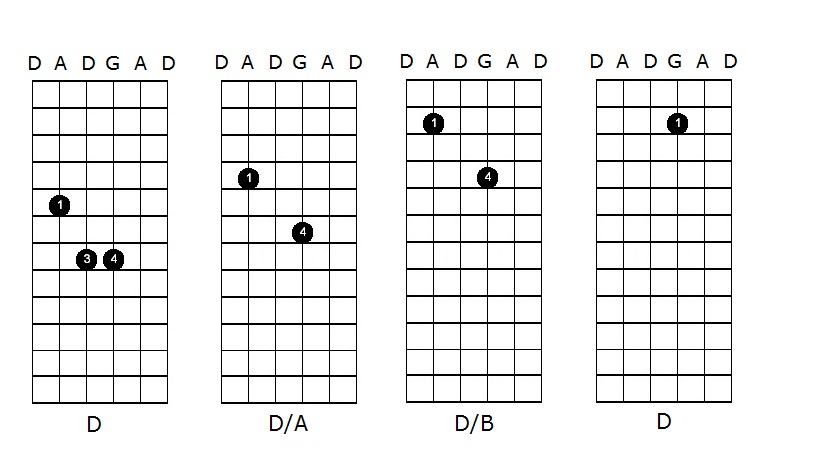Thanks to those who continued on with the DADGAD class. This past week we reviewed reels using accompaniment to Silver Spear (D maj) as an example. I chose Silver Spear for a couple of reasons. One is that it is a fairly common tune and often one of the first reels that students will learn to play. Second is that from an accompaniment perspective, it is a fairly blank slate as tunes go. So it is a great tune to try out different progressions and use chord substitutions to make it more interesting.
Play along with Silver Spear
One important concept that I wanted to re-emphasize here in the blog is the idea of changing your intensity with the phrases as another way to change the feel of a tune and to give the tune more energy. I think the ending phrase (both the A and B parts) of Silver Spear is a good place to add intensity with the chord changes. Try it and see what you think!
I also introduced (yet) another D progression. This progression probably keeps the D feel more than others and is really just stepping down the scale from D / C# / B# to D. Kind of like a descending base line in folk music except that here you’re doubling it up and leaving the base note (D) unchanged. Here is the fingering for the progression.
[Remember that in some tunes the 4th chord is more appropriate to go to A (single finger) rather than D. You’ll just have to trust me on that and listen for it!]
In the 2nd half of class we talked about hornpipes using The Boys of Blue Hill as an example. Again, this is a very common hornpipe, and straightforward in the chord options. Thus, a good one to work on for the rhythm. We discussed the difference in rhythmic feel between a hornpipe and a reel with the two primary differences being the lilt (or pointed to quote Guy) and the strong finishing 2 beats at the end of each A and B part. You will also hear a greater use of triplets in hornpipes than other tunes (a triplet is basically putting three equally spaced notes where two eighth notes usually would be played… see if you can find them in the recording of Boys of Blue Hill).
Play along with The Boys of Blue Hill
Try the boom-chuck (or boom-chick if you’re Susan) approach and perhaps my alternative approach emphasizing those two strong down strokes on the last two beats. Once you’ve got the rhythm working well for you, then try working on this next tune which was taught to Alex’s fiddle students a couple of weeks ago. This has some less standard chording, and will provide a good challenge for you to work on this week. We’ll discuss some options you might use in next class.
Play along with Napoleon Crossing the Rhine
[sorry about the quality… only had time for one take before work… I’ll try to redo if I get a chance]
For more on the differences between hornpipes and reels, I stumbled upon this article yesterday. Also looks like an interesting on-line magazine on all things diddly. Note the underlying rhythmic structure he provides at the end of the article. Probably accounts for why triplets are so often used.

